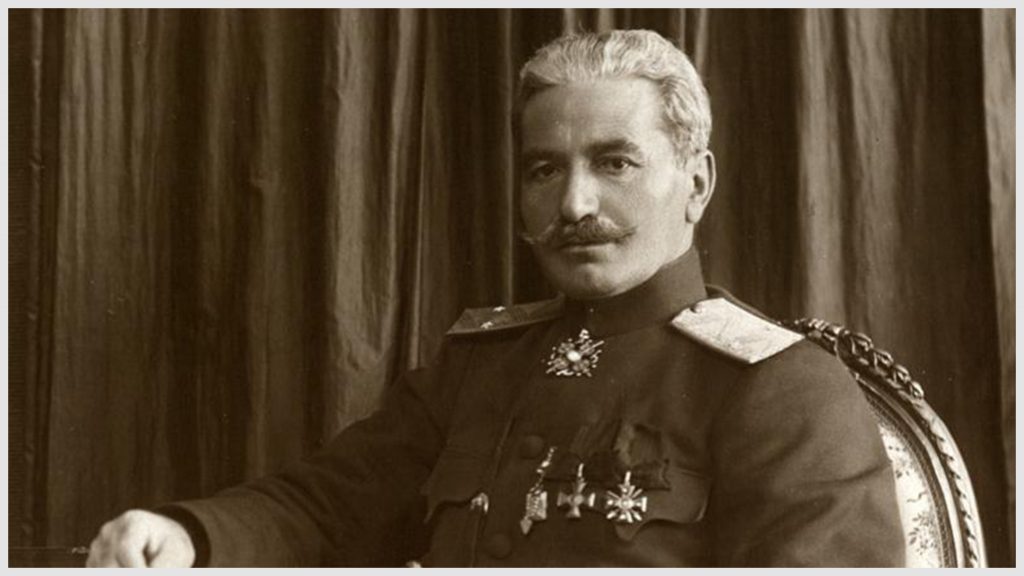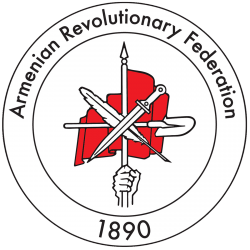Antranig Ozanian
 25 February , 1865 -
31 August , 1927
25 February , 1865 -
31 August , 1927
Antranig was born in Shabin-Karahisar, Western Armenia, where he attended the Mousheghian School and received early training in carpentry, his father’s trade. He began his revolutionary activity in Sepasdia province in 1888, and joined the Dashnaktsoutiun in 1892, in Constantinople.
Soon after joining the ARF, Antranig returned to the interior provinces, where he defended Armenian villages in the Moush-Sasoun district in 1895–96. He crossed over to Van with group leader Vazgen in July 1897 and then moved on to Akhlat and Sasoun, where he stayed until 1904 as a rank-and-file fighter. He took on a greater role there after the assassination of fedayi leader Aghbiur Serop in 1900.
With Kevork Chavoush and Magar, he avenged Serop by killing the Kurdish executioner, Bshareh Khalil. With the blessing of the Central Committee of Moush, he and Kevork Chavoush organized and led the fighting at the besieged Arakelots monastery (near Moush) in 1901, donning the uniforms of Turkish officers in order to escape.
In 1903, he was appointed commander of the Dashnaktsakan forces in Sasoun and led the 1904 uprising. Immediately thereafter, he withdrew to Vaspourakan with his fedayis and eventually reached Iran.
A participant in many high-level ARF assemblies, Antranig attended the Council of ARF Representatives at Geneva in 1905. He then settled in Bulgaria, where he played an active role in establishing the ARF military academy.
He took part in the Fourth ARF World Congress in Vienna in 1907 and was elected a member of the ARF’s Demonstrative Body, which was in charge of demonstrative actions (propaganda by deed). An audacious, enterprising military leader, Antranig was also intractable by nature and began having difficulties with the party soon after, citing philosophical differences. He nevertheless continued to work within the ARF until the days of the Independent Republic, but made a final break from the party thereafter.
Antranig fought alongside the Bulgarians in the Balkan War of 1912, also identifying himself with Macedonian liberation movement. He went to the Caucasus in 1914 and was given command of the First Armenian Volunteer Regiment on the Caucasian front. Under the supreme command of General Nazarbegian (Nazarbegov), Antranig won the battle of Dilman. His forces joined with the Armenian legion in expelling the Turks from south of Lake Van but were forced to retreat by a Turkish counteroffensive in July, 1915. His unit was dissolved by the authorities in 1916.
Promoted to the rank of division general in 1917, Antranig led a Western Armenian division which attempted to hold off the eastward advance of Turkish forces. Forced to evacuate Erzurum in March 1918, he resigned his command and left for Tiflis the same month. He then formed a new Western Armenian unit but did not participate in the decisive battles around Sardarabad in May 1918.
After independence, Antranig had misunderstandings with the Republic’s government, partly over the decision to sign the Treaty of Batum in June 1918. He remained in the Transcaucasus for the next few years, leading Armenian military resistance to Tatar incursions in Zangezour, Nakhijevan, and Karabagh. About to retake Karabagh in December 1918, Antranig was halted by a message from the British regional commander, who guaranteed a peaceful solution to the question. The situation was subsequently left unresolved, resulting in Karabagh’s exclusion from Armenia’s borders.
Forced by British pressure to disband his forces, Antranig left the Caucasus in 1919. He first went to Paris and London, trying to persuade the Allies to occupy Turkish Armenia. He went on to the US, where he raised funds for the Armenian army. He died in 1927, in Fresno, California.
His remains were buried in the Père Lachaise cemetery in Paris, after Soviet authorities refused to allow his interment in Soviet Armenia. His remains were eventually transferred to Armenia, in 1990.
